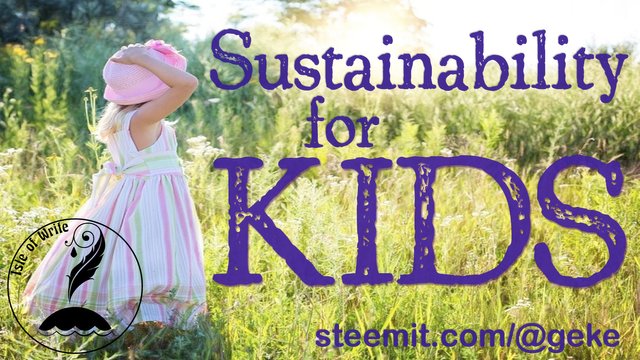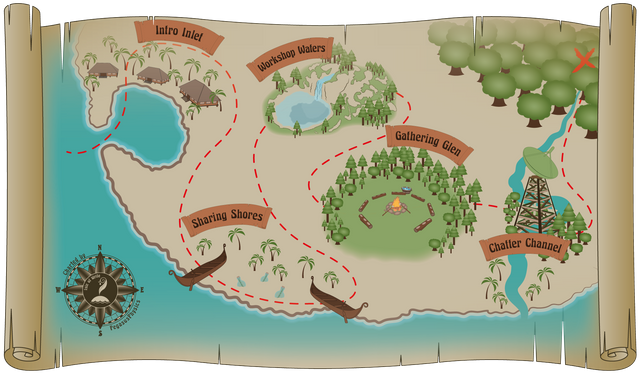Sustainability for Kids: 'proof of stake' mining

Part 1 | Part 2 | Part 3 | Part 4 | Part 5 | Part 6 | Part 7 | Part 8
Part 9 | Part 10 | Part 11 | Part 12 | Part 13 | Part 14 | Part 15 | Part 16
Part 17 | Part 18 | Part 19 | Part 20 | Part 21 | Part 22 | Part 23 | Part 24
The most pressing sustainability issue for people involved with cryptocurrency is the massive amount of energy it takes to add new blocks to the chain: to verify, calculate, and broadcast transactions. It's been estimated that crypto mining consumes as much energy as a small country. According to the Bitcoin Energy Consumption Index, each transaction consumes 251 kilowatt hours of electricity. That amount of energy would power 8 homes in the US for one day.
In colder climates, crypto mining could be used to offset heating costs, but in warmer ones, cooling costs add to the basic energy drain of crypto transactions. So what are some ways that we can sustainably mine cryptocurrency?
The bitcoin Lightning Network promises to make blockchain transactions faster, which would save energy. It would do this by combining blockchain messages into batches, rather than processing each one individually. The Lightning Network alpha was launched just two weeks ago. But bitcoin still operates on a “proof of work” basis, which is looking to be more and more unsustainable.
What is “proof of work”?
To mine a bitcoin, a computer needs to be the first one to facilitate the transaction in question. The computer does this by finding a specific signature based on three inputs: 1) the signature of the preceding block, 2) the list of new transactions, and 3) a random number. Since a miner doesn’t have the third input, it has to generate signatures over and over to guess the third input. It's this repeated guessing that constitutes “proof of work,” but it's also what consumes so much electricity.

In fact, “proof of work” mining rewards users for spending “computational resources.” And remember, spending or consuming resources is the same as destroying and using up resources. So “proof of work” mining is very consumption-oriented.
But there is an alternative to using a “proof of work” system in crypto mining: it's called “proof of stake.” Instead of having to win the reward by guessing a random number first, users can win rewards based partly on how invested they are on the platform.
As most of us know, Steemit is a “proof of stake” platform where users can mine STEEM by upvoting. But a user's reward on Steemit isn't based on how fast they can verify transactions (or how much electricity they use), it's based on how much SP (locked-up or “vested” STEEM) they have in their wallet.
This eliminates the need for miners to burn electricity guessing at random numbers. And it shifts the idea of rewarding someone for random work to the idea of rewarding someone for their investment in the platform.

Do you see a parallel here between “proof of work” and the type of “work” the government created under Keynesian schemes like the New Deal? It was work for work's sake but work that didn't always produce value: like digging holes just to fill them back in. There's a lot of work involved, but the work, itself, didn't create wealth for the economy as a whole.
Work for work's sake is wasteful and unsustainable, which is very similar to the energy consumption required for “proof of work” mining. But “proof of stake” mining, like we do here on Steemit, is much more sustainable and eco-friendly. Next time, we'll look at other ways to crypto is becoming more sustainable.
This article is one of a series I'm writing for the 30 Day Writing Challenge hosted by @dragosroua. If you want to join, write on a topic that interests you or that you'd like to learn more about and use the tag #challenge30days. As Dragos says, "The key word sequence here is: "write every day."

Think you'd like to wash up on our shore?
The treasure map will bring you right to our door!


This is one of the reasons I have committed to doing volunteer work for #solarcoin. It is a legitimate attempt to develop a significant non-governmental incentive for solar development, and it uses proof of stake time (PoST)! If SLR grows in value as it is intended, it might even become a viable payment option as well as a way to transfer money quickly, without fees and at a minimal cost to the environment.
SolarCoin is on my list for today's post!
This is a very good point, why Steemit is great:-) I have been thinking a lot about how bad it is to use all that electricity that it takes to min Bitcoins. That will not be sustainable... Thanks for sharing your ideas about this:)
I like your analogy of digging holes just to fill them back in. Pow does seem kinda silly.
very successful
Beautiful post, sweet and beautiful little boy I really like a child would give to me
Having a smart child, good in attitude, and obedience is the dream of many parents. How to educate a child into a smart child is a question that is often asked by parents. I have an article about its see @akubaihaqi
To see your topic we have something in common; sustainability! Good posts have you made!
Those kids nowadays must be really smart in order to understand your posts.
I enjoy them too, because now I understand some of this crypto and economics stuff.